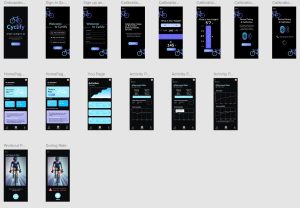Team Weekly Update | All | 2/8
Project Risks & Management
Significant Risks:
– Hardware compatibility issues, ensuring seamless communication between the Raspberry Pi and ESP32, especially over Bluetooth.
– Processing power and latency concerns, particularly the Raspberry Pi’s ability to handle OpenCV tasks efficiently in real time.
– Component availability, as delays in receiving parts from our BOM order could slow down hardware integration.
– Software integration challenges, including proper synchronization between the data pipeline, Bluetooth module, and camera feed processing.
Risk Management Strategies:
– Hardware testing is being conducted early to mitigate potential roadblocks. Preliminary Bluetooth communication tests with the ESP32 were completed successfully.
– Parallel development is in place, with software components being worked on while waiting for hardware to arrive.
– Alternative sourcing is being considered by selecting multiple vendors for critical components to avoid supply chain issues.
– A modular software approach ensures each software module works independently before integration, reducing debugging complexity.
Contingency Plans:
– If Bluetooth data transfer is too slow or unreliable, WiFi or direct serial communication will be explored.
– If OpenCV processing on the Raspberry Pi is too slow, pre-processing images on a separate system or using an optimized model will be considered.
– If BOM delivery is delayed, prototyping with alternative available components will keep development moving forward.
Design Changes
Changes Made:
– Initial testing confirmed Bluetooth feasibility, so the decision was made to move forward with that instead of WiFi.
– The BOM was expanded to include extra test components to explore different sensor configurations.
– Adjustments were made to the proposal slide deck to provide a clearer explanation of the dual-system approach and to refine the scope of our initial prototype.
Reasons for Change:
– Bluetooth offers lower power consumption and is sufficient for communication needs.
– Having extra components provides flexibility in case of integration challenges.
– Feedback from the proposal presentation helped refine how we frame the project goals and technical implementation.
Costs Incurred:
– A slight increase in cost due to additional testing components.
– More development time is needed to refine Bluetooth communication protocols.
– Time spent improving the proposal presentation resulted in minor schedule shifts, but these refinements will help keep the project on track in the long run.
Mitigation Strategies:
– Reusing personal ESP32 modules for initial tests helps minimize additional expenses.
– Streamlining the firmware development process helps avoid delays in integrating Bluetooth.
– Clearly defining project milestones post-proposal will keep efforts focused on the most critical development tasks.
Updated Schedule
The project remains on track with the overall timeline.
The next week’s goal is to start integration testing with the Raspberry Pi and ESP32 once parts arrive.
OpenCV setup will begin in parallel to ensure efficient data processing when hardware is fully integrated.
Refinements based on proposal presentation feedback will be implemented to improve the clarity of system requirements and goals.
Progress Showcase
Accomplishments so far:
– Successfully presented our proposal presentation, explaining the core concept, hardware selection, and technical challenges.
– Bluetooth data transfer between ESP32 devices has been successfully tested.
– The project website was set up with theming and essential structure.
– The preliminary BOM has been compiled and is ready for ordering.
Preliminary System Photo from Proposal Presentation

Mockup UI/UX Design for Mobile App
Link to design: https://www.figma.com/proto/3y2oyLZuNZqSVpICnLgq11/Cyclify?node-id=1669-162202&t=tb6mrjKj2YNlMD0a-1



